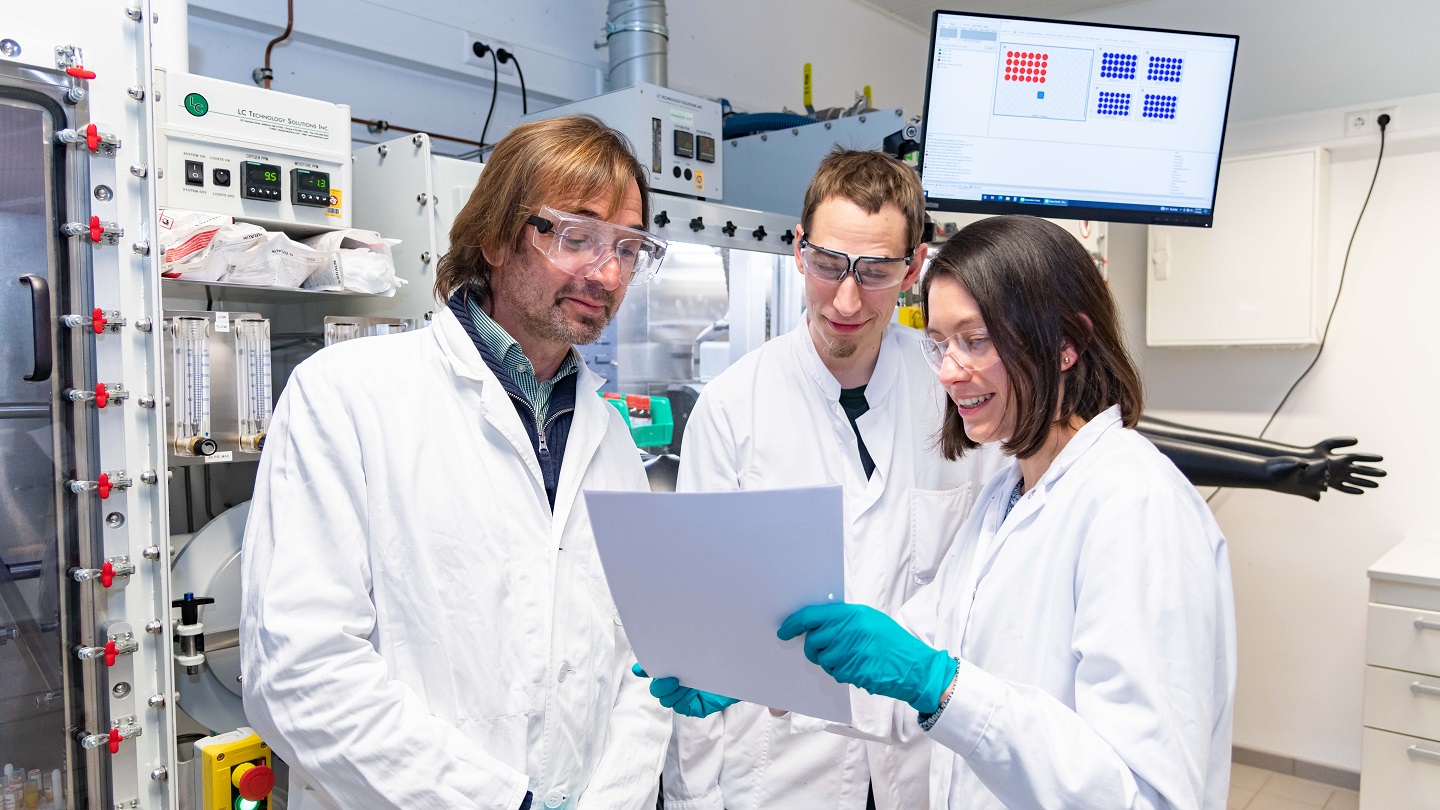EHS Performance Indicators
All available performance indicators concerning Environment Health and Safety (EHS) are summarized here. Changes to data over time are discussed in the chapters Environment and Occupational Health and Safety.
The global Environment, Health & Safety (EHS) department leads the development, implementation and tracking of environmental sustainability, as well as workplace health and safety activities at Boehringer Ingelheim. Through its global network, which encompasses all operating units, as well as international and local partners, we strive to optimize our global environmental and safety performance.
Our environmental sustainability pillar MORE GREEN and its corresponding carbon footprint, clean water, circular economy & resource use initiatives, as well as our BE SAFE workplace safety program, are part of our Sustainable Development for Generations framework. By implementing these, we are continuing a journey that began more than 140 years ago – becoming even more sustainable and continuing to significantly reduce the company’s greenhouse gas emissions, as well as our energy and resource use and water footprint.
By 2030, we have committed to becoming carbon neutral in our operations (Scope 1 and 2) and to decarbonizing our business activities in line with scientific principles. We aim to further reduce our water footprint, particularly at sites affected by water scarcity, protect clean water in the communities where we operate, utilizing aspects of circularity to reduce overall operation waste to landfill, and apply eco-design and green chemistry concepts to all new products.
Through the BE SAFE program, established in 2010, we place a particular emphasis on ensuring a safe workplace for our employees and partners. We continuously strive to optimize our work and safety culture and strive to maintain our employees’ long-term good health by preventing accidents, incidents, and occupational health risks.
Performance indicators related to our environment, workplace health and safety commitments are collected and managed by the global and local EHS teams in all Boehringer Ingelheim Operating Units. The data below reflects the global initiatives’ progress and contribution towards achieving Boehringer Ingelheim’s environmental sustainability and safety commitments. All indicators are based on quantities and are normalized to global net sales (sales index), with 2010 or 2019 serving as the base year. Global greenhouse gas (GHG) emissions are calculated according to the Greenhouse Gas Protocol.
2023 Summary: Environmental Stewardship at Boehringer
We had a very successful business year in 2023 and continued increasing our production globally, while decreasing GHG emissions in our operations by 36% since 2019.
Our decarbonization goal is consistent with limiting global warming to 1.5 degrees Celsius, compared to pre-industrial levels, as defined by the Paris Climate Agreement and the requirements of the Science-Based Targets initiative (SBTi). In 2023, our science-based emission reduction targets (Scope 1, 2 and 3) were validated and approved by the “Science Based Target” initiative.
All strategic measures to reduce carbon emissions are coordinated globally by the MORE GREEN environmental sustainability pillar and implemented through local operating units in consideration of requirements available there. In addition, we have implemented a supplier engagement program and a platform to increase access to renewable electricity for suppliers to reduce carbon emissions in our value chain (Scope 3). As part of the carbon neutrality program, seven of our global production and R&D sites are certified as carbon neutral in their operations (Dortmund, Kathrinenhof (Germany), Gainesville (Georgia, USA), Sant Cugat (Spain), Shanghai (China), Fornovo (Italy) and Paulinia (Brazil)).
Absolute energy consumption has remained at a similar level since the base year 2019, despite steady growth in our operations and manufacturing, resulting in an overall reduction in energy consumption normalized to net sales of 26% over this period. In addition, the proportion of electricity purchased from renewable sources was increased to more than 70%, while on-site renewable energy generation was further expanded at various sites. These include two recent pilot projects at our corporate headquarters in Ingelheim am Rhein, Germany, a 1.2 MW solar power plant that went into operation in August 2023, and a new biomass power plant that will be fully operational in 2024.
Boehringer focuses on environmental sustainability in its larger projects and provides another EUR 130 million for green projects that contribute to the global MORE GREEN goals. This fund has already helped to initiate more than 65 new environmental sustainability projects starting in 2020. To foster low carbon technologies and solutions, Boehringer Ingelheim has implemented an internal carbon price of EUR 100 per ton CO2 emissions for investments, which has been fully established at all sites.
Currently unavoidable GHG emissions are partially offset through certified reforestation, biodiversity and local community projects in collaboration with ClimateSeed and local partners around the world.
Compared to base year 2019, we have managed to significantly reduce our waste to landfill. This is due to increased circularity in our business practices and drive towards Zero Waste to Landfill (ZWTL) certification. The production site in Dortmund (Germany) became the third site to achieve a “Zero Waste to Landfill” certification, accredited by TÜV Rheinland. Sites in Shanghai (China) and Sant Cugat (Spain) were recertified. The environmental impact of the selected products in the entire value chain was evaluated using Product Environmental Footprint (PEF) and Life Cycle Assessment (LCA) methodologies and in particular; JARDIANCE® and NEXGARD® in 2023. In addition, a lifecycle assessment for OFEV® was conducted and certified by TÜV Rheinland and confirms that the assessment meets international standards.
Similar to energy consumption, total water withdrawal has remained at a similar level since 2019, with withdrawal normalized to net sales continuing its continuously reducing trend, reaching a new best at minus 27% compared to the base year (2019). Regarding the water stewardship initiative, in 2023 the Promeco (Mexico) site has received a recertification of the AWS Standard, while the Sant Cugat (Spain) site has officially started its implementation in response to the severe water crisis in Catalonia. Furthermore, the Clean Water Index, our initiative to eliminate APIs discharge in the environment, has been further improved in 2023, reaching a new high of 64.6% (43.1% in 2022).
Health & Safety: Reducing occupational accidents
In 2020, we observed a significant drop in accidents, linked to the COVID-19 pandemic and resulting shift to remote work for many employees. However, as employees increasingly returned to their on-site workplaces, the number of occupational accidents saw a slight increase in 2021, stabilizing at the same level in 2023. Despite these fluctuations, we have successfully reduced occupational accidents by 21% since 2019. This achievement can be attributed to our ongoing health and safety initiatives, such as BE SAFE, which continue to enhance areas like road safety, ergonomics, risk awareness and safety culture.
Indicators for the following topics are available below:
- Greenhouse Gas Emissions(GHG)
- Energy
- Waste
- Water
- Accidents
Greenhouse Gas (GHG) Emissions Scope 1&2

| 2019 (BY) | 2020 | 2021 | 2022 | 2023 | |
|---|---|---|---|---|---|
| GHG Emissions Scope 1 [1.000 tons CO2e] | 289 | 276 | 280 | 280 | 295 |
| GHG Emissions Scope 2 [1.000 tons CO2e] | 273 | 165 | 99 | 71 | 66 |
| Offsetting of GHG Emissions (Scope 1+Scope 2) [1.000 tons CO2e] | 0 | 0 | -31 | -62 | -75 |
| GHG Emissions Index (Normalised to Net Sales) [%] | 100% | 76% | 62% | 49% | 48% |
Greenhouse Gas (GHG) Emissions Scope 3

| 2019 (BY) | 2020 | 2021 | 2022 | 2023 | |
|---|---|---|---|---|---|
| GHG Emissions Scope 3 [1.000 tons CO2e] | 3.801 | 4.066 | 4.081 | 4239 | - |
| Offsetting of GHG Emissions (Scope 3) [1.000 tons CO2e] | -40 | -74 | -17 | -9 | -38 |
GHG Emissions Reduction in %

| 2019 (BY) | 2020 | 2021 | 2022 | 2023 | |
|---|---|---|---|---|---|
| GHG Emissions Reduction (Absolute) [%] | 0% | -21% | -33% | -37% | -36% |
| GHG Emissions Reduction (Normalized to Net Sales) [%] | 0% | -24% | -38% | -51% | -52% |
Energy Consumption

| 2019 (BY) | 2020 | 2021 | 2022 | 2023 | |
|---|---|---|---|---|---|
| Energy Consumption [GWh] | 2.035 | 1.907 | 1.991 | 2028 | 1.986 |
| thereof: Renewable Energy [GWh] | 183 | 303 | 547 | 652 | 560 |
| Energy Consumption Index (Normalised to Net Sales) [%] | 100% | 93% | 92% | 80% | 74% |
Share of Purchased Renewable Electricity

| 2019 (BY) | 2020 | 2021 | 2022 | 2023 | |
|---|---|---|---|---|---|
| Certified 100% Renewable Electricity Purchased [%] | 4% | 37% | 59% | 68% | 75% |
| Other Electricity Purchased [%] | 96% | 63% | 41% | 32% | 25% |
Waste to Landfill

| 2010 (BY) | 2020 | 2021 | 2022 | 2023 | |
|---|---|---|---|---|---|
| Waste to Landfill [tons] | 5796 | 3213 | 2588 | 2060 | 2210 |
| Waste to Landfill Index (Normalised to Net Sales) [%] | 100% | 72% | 52% | 56% | 62% |
Waste Rates in %

| 2019 (BY) | 2020 | 2021 | 2022 | 2023 | |
|---|---|---|---|---|---|
| Recycling/Reuse Rate [%] | 59% | 58% | 54% | 57% | 59% |
| Waste to Energy Rate [%] | 18% | 24% | 25% | 23% | 23% |
| Waste to Landfill Rate [%] | 7% | 6% | 9% | 10% | 6% |
| Waste Incineration Rate (without heat recovery) [%] | 13% | 10% | 10% | 9% | 10% |
Water Withdrawal

| 2019 (BY) | 2020 | 2021 | 2022 | 2023 | |
|---|---|---|---|---|---|
| Water Consumption [million m3] | 6,3 | 6,3 | 6,1 | 6,3 | 6.2 |
| Water Consumption Index (Normalised to Net Sales) [%] | 100% | 96% | 88% | 78% | 73% |
Accidents (Occupational Health and Safety)

| 2019 | 2020 | 2021 | 2022 | 2023 | |
|---|---|---|---|---|---|
| Work Related Accidents | 156 | 97 | 114 | 116 | 123 |
| Work Related Fatalities | 2 | 0 | 0 | 0 | 0 |
| Lost Labour Days | 3964 | 1.346 | 2.150 | 2.120 | 1958 |
| Accident Frequency Rate (AFR) | 2 | 1 | 1 | 1 | 1 |
| Accident Severity Rate (ASR) | 44 | 15 | 23 | 23 | 21 |
Related Press Releases

Boehringer Ingelheim receives SBTi validation for CO2 reduction targets

Boehringer Ingelheim unveils its first global sustainability publication ‘Imagine’
Related Content

Sustainable medicines for our planet

Every Drop Counts


